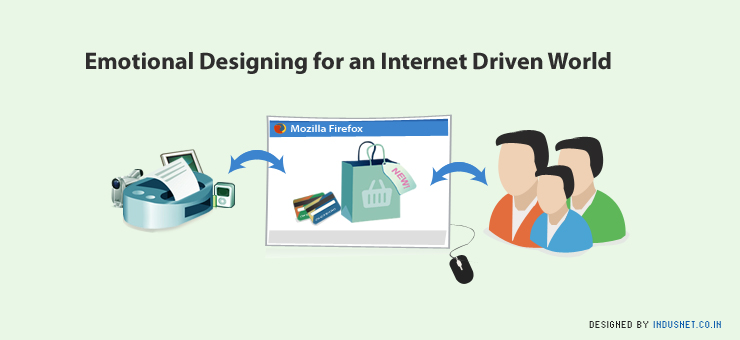
Cognitive science helps us to understand that there is more to consumer decisions and choices than just good products. While good products and designs are fundamental to their own success in the market, certain choices and decisions made by consumers are not limited to the intellectual quality of a product’s benefits or superiority over others.
Design’s Underlying Cognition
Psychologists believe that consumers make decisions on an impulse, and the attitude and opinions they develop towards a company, its products or its designs are largely based on their own life experiences, mood states, emotions and certain personality characteristics. One could say that psychological processes like perception, memory, emotions and cognitive schemas play very important roles in consumers’ decision to purchase certain designs and reject others.
Jeroen van Erp, co-founder of Fabrique, a multidisciplinary design agency proposed an inverted pyramid model that depicts designers as having the responsibility of creating aesthetic products which provide meaning and evoke emotions in consumers. It is a role that is perhaps more profound than that of an entrepreneur’s, whose job is to profitably sell his products.
Psychologists also emphasize that many purchases are emotional in nature, and attitudes are formed when there is an emotional reaction towards a product, when certain memories from past life experiences elicit strong emotions in consumers. These emotions are elicited when a consumer encounters certain product or a design.
Emotional Design: Why We Love (or Hate) Everyday Things by Donald Norman explores the underlying psychological process of buying. The book helps designers and manufacturers to understand why it is important to consider emotions, perception and other cognitive processes while creating websites or designing products.
Emotional Designing for an Internet Driven World
In a world that is dominated by ecommerce and web-driven marketing, a company’s website becomes an intermediary between products and services and consumers who purchase them. A well-designed website has the ability to capture and sustain a consumer’s attention, and this attention can be translated into a positive perception if the design or layout of the website attempts to do so. Perceiving a website positively usually results in processing of that positive information and associating it with positive life experiences.
For instance, a website that is designed aesthetically may encourage a consumer to associate those colours with an art class that they took in school, which probably was a very positive and satisfying experience for them. These positive memories evoke positive emotions and mood states that help consumers to associate that particular website with joy, satisfaction or even self-actualization.
Emotional Designing for Webpages
If we are talking about how one could elicit positive emotions when designing a website, one must understand that the web page is akin to canvas. The canvas can be ‘painted’ with aesthetic images, contours and colors. Intuitive navigation and task-oriented functions are processed by visitors as credibility, trustworthiness and security. These perceptions evoke positive emotions that may translate into loyalty and continued visits. Of course, positive text and careful usage of words, avoiding jargons and not being circumstantial and tangential allow for information to be rendered in an aesthetic manner.
Apps and Emotions
While designing web or mobile applications, similar psychological and cognitive themes can be applied. An intuitive interface, colors associated with trust, simplicity and minimalism, and reduced clutter in app design help in evoking positive emotions as well. Using minimalism, intuitive layouts and contours, and elegance can help in evoking positive emotions from products and devices as well. Thus, a designer must bear in mind to consider aspects that have direct emotional consequences.
Tapping Sensual Responses
Sensual stimuli that activate visual, tactile and auditory receptors usually evoke emotions. Products and websites must be designed to please the eye. If possible, websites can have audio in the background and touchscreen capabilities of applications and websites allow for tactile stimulation. It isn’t possible yet to tap olfactory (smell) and gustatory (taste) responses when designing websites, but one can’t predict the future!
Emotions are strongly connected to social situations and thus anything that can be shared, help in starting conversations and be an extension of consumers personality always help. Thus, designing for emotions is to remember that customers can and do make decisions based on feelings, impulses and mood states and not based only upon rational arguments and logic.